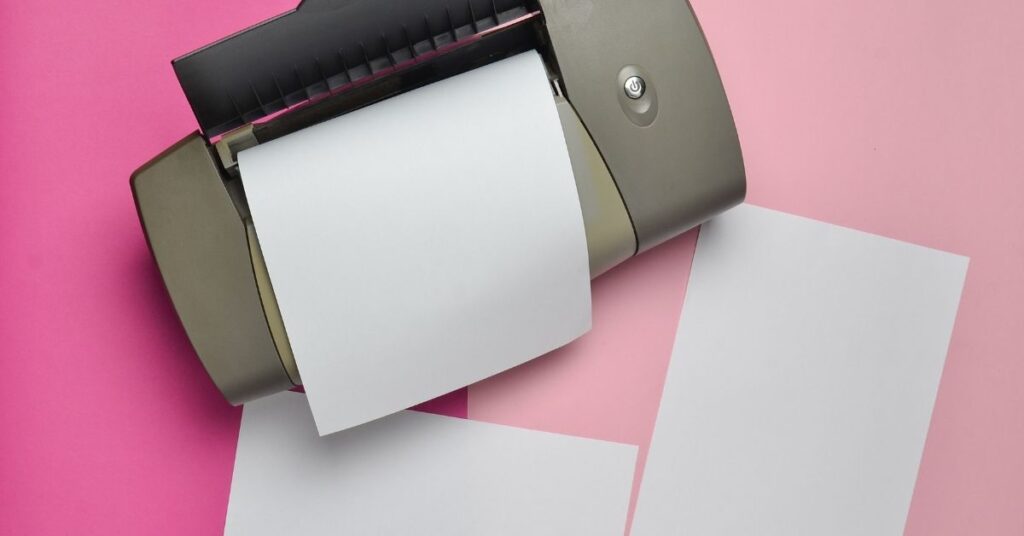Printing paper is crucial in achieving high-quality prints, making it just as important as selecting the right printer and ink. The type of paper you choose can significantly impact the final result, affecting color accuracy, image sharpness, and durability. With various printing paper types available, choosing the best one for your specific printing needs can be challenging. In this post, we’ll provide an essential guide to selecting the right printing paper, covering the different types of paper, considerations to keep in mind, printer compatibility, and tips for choosing the best paper for specific projects. By the end of this post, you’ll be better equipped to choose the perfect paper for your printing projects.
Various types of printing paper are available in the market, each with its unique characteristics and ideal uses. Here’s an overview of the most common types of printing paper:
Glossy Paper:
This type of paper has a reflective and shiny finish that produces high-contrast, vibrant images. Glossy paper is ideal for printing photographs, posters, and marketing materials that require rich, vivid colors.
Matte Paper:
Matte paper has a non-reflective surface, producing a more subdued and professional look. It’s an excellent choice for printing text-heavy documents, graphics, and art prints.
Textured Paper:
This paper has an embossed or otherwise textured surface, giving it a distinctive and elegant appearance. Textured paper is often used for printing high-end invitations, greeting cards, and stationery.
Cardstock:
Cardstock is a thicker and more durable type of paper that can be used for printing business cards, brochures, and other promotional materials. It’s available in various finishes, including matte, glossy, and textured.
Specialty Paper:
Many types of specialty paper are available, such as metallic, translucent, and adhesive-backed paper. These papers are ideal for creating unique and eye-catching designs.
When choosing printing paper, there are several factors to consider that can significantly impact the final output. Here are some of the most important considerations to keep in mind:
Color:
The color of the paper can affect the overall color accuracy of your prints. If you’re printing photos, choosing a paper color that complements the colors in your images is essential.
Weight:
The weight of the paper refers to its thickness and density. Heavier paper tends to be more durable and has a more substantial feel, making it ideal for printing materials that will be handled frequently, such as business cards.
Brightness:
The brightness of the paper affects how vibrant the colors appear. The brighter paper produces sharper and more vivid colors, making it ideal for printing images and graphics.
Finish:
The finish of the paper determines how shiny or matte the surface appears. The finish can significantly impact the final appearance of your prints, so it’s essential to choose the appropriate finish based on your project needs.
Printer Compatibility:
It’s crucial to choose a paper that’s compatible with your printer’s specifications. Not all printers can handle all types of paper, so check your printer’s manual to ensure compatibility.
When determining the best paper for your specific printing needs, consider the type of document you’re printing, the intended use, and the desired look and feel of the final product. For example, if you’re printing a high-end brochure, choose a heavyweight, glossy paper compatible with your printer. On the other hand, if you’re printing a business proposal that requires a more professional look, choose a lightweight, matte paper. Experiment with different types of paper to find the best fit for your needs.
Choosing the right paper for your printer is crucial to achieving high-quality prints. Not all printers can handle all types of paper, so it’s essential to consider your printer’s specifications when selecting paper. Here are some printer specifications to look for when choosing printing paper:
Paper Size: Make sure the paper you choose is compatible with your printer’s paper size specifications. If the paper is too large or small, it won’t feed correctly, resulting in paper jams or other issues.
Paper Weight: Check your printer’s manual to see the recommended paper weight range. Using too heavy or too light paper can cause jams, smudging, or other printing issues.
Paper Type: Some printers are optimized for specific paper types, such as glossy or matte paper. Check your printer’s manual to ensure compatibility with the paper type you plan to use.
Paper Tray Capacity: Make sure your printer’s paper tray can accommodate the paper size and weight you plan to use.
Ink Compatibility: Certain types of paper require specific types of ink, such as dye or pigment-based ink. Check your printer’s manual to ensure your ink is compatible with the paper you plan to use.
It’s also important to note that different printers have different capabilities and limitations. If you need help determining which paper is best for your printer, consult the printer’s manual or contact the manufacturer for recommendations. Using the wrong paper can damage your printer, resulting in costly repairs or replacements.
Choosing the right paper type for your project is critical to achieving high-quality prints accurately represent your brand and message. Here are some tips for selecting the correct paper type for specific projects:
Photo Printing: For printing photos, it’s important to choose a paper that’s compatible with your printer and optimized for photo printing. Glossy paper is popular for photo printing as it produces vibrant, sharp, and detailed images. Matte paper is also an option for a more subdued, artistic look.
Business Cards: Business cards require paper that is both durable and professional-looking. Heavyweight paper with a matte finish is a popular choice as it can withstand handling and gives a professional feel to your card.
Flyers: When printing flyers, you want lightweight paper yet durable enough to withstand handling. Glossy or matte finish paper can be a good choice depending on the look you’re trying to achieve.
Brochures: Brochures require high-quality paper that can withstand folding yet produce crisp images and text. A heavyweight paper with a glossy or matte finish is a popular choice.
Invitations: Invitations require a paper that is both elegant and sturdy. A heavyweight paper with a textured finish, such as linen or cotton, can give your invitations a high-end feel.
In conclusion, choosing the right printing paper is essential for achieving high-quality prints that accurately reflect your brand and message. Understanding the different types of paper available and considering factors such as color, weight, and printer compatibility can help you make an informed decision when selecting paper for your project.
It’s also important to note that not all printers are compatible with all types of paper, so checking your printer’s specifications before making a purchase is essential. Investing in high-quality paper can also impact the overall quality of your finished product and enhance the perceived value of your brand.
Are you in need of ink and toner cartridges? Discover the ultimate destination for all your printing needs at Ink Toner Store! With our incredible prices and top-notch customer service, you’ll enjoy significant savings without compromising quality. Make the most of our special offer and get 10% off your first purchase using the code “INKTONERSTORE10” at checkout.
Plus, rest easy knowing that our cartridges are compatible with all major printer brands. Shop online at Inktonerstore.com now and take advantage of our speedy same-day shipping. Don’t settle for less – experience the Ink Toner Store difference today!



